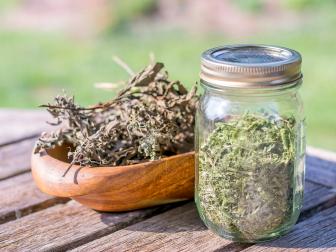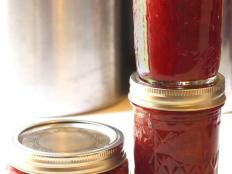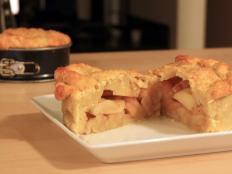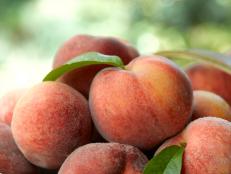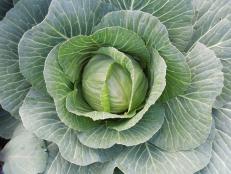5 Ways to Freeze Fresh Herbs
Learn how to prepare chives, parsley and other herbs for the deep freeze.

Freezing herbs is fast, easy and retains much of the taste, smell and nutrients found in fresh herbs. Although they aren’t always pretty and may not stand up to scrutiny for use in salads or as a garnish, frozen herbs will retain much of the flavor of fresh-picked herbs for use long after the growing season has ended.
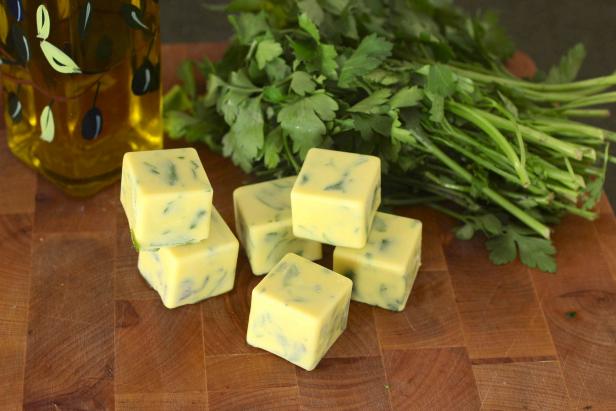
Using fresh herbs straight from the garden is a summer pleasure even the most casual cook can appreciate. Sadly, like summer itself, it’s all too fleeting. Once picked, their shelf life can be extended a bit, but fresh herbs are decidedly “of the moment.” Drying herbs is probably the best-known method for preserving summer herb surpluses, and maybe the easiest way to make “hard” herbs like oregano, bay or rosemary last. However, drying doesn’t always capture the flavor as well as we’d like, and for herbs with a higher moisture content like mint, parsley or chives, dehydration may not be an effective option for preservation.
Enjoying a surplus in the herb garden? Try these five strategies for freezing fresh herbs:
1. Freezing Bare Herbs
Many herbs can be simply frozen on the stem and stored in an airtight container. Left on the stem, hardier herbs like rosemary, dill, thyme, bay or sage can be spread in a single layer on a baking sheet or plate and placed in the freezer. Once frozen, transfer them into an airtight container for freezer storage without clumping. To use, simply remove herbs a sprig at a time. Some herbs, like chives, can be chopped and frozen bare with little loss of flavor.

Photo by Mick Telkamp
2. Freezing in Water
For long-term storage, tender herbs like mint, parsley and cilantro can be removed from their stems and frozen in ice cubes trays. Pack the ice cube trays with chopped or whole-leaf herbs, cover them with water and pop them into the freezer. Once frozen, cubes can be transferred into an airtight container for easy, single-serve access.
3. Freezing in Oil
Using an ice cube tray, herbs that will be used for cooking can be frozen in olive oil or butter in convenient one-ounce cubes to trap the flavor in fresh herbs for use all year long in soups, salads, stir-fries, pasta or marinades. Portions may be thawed for use or tossed whole into recipes for a burst of flavor when fresh herbs aren’t available and store-bought seasonings just won’t do.
Basil freezes best when first processed into pesto, but this practice also works well with other herbs like oregano or thyme to be used in soups, sauces or other dishes where oil is welcome. Remove stems and combine about a cup of fresh herbs with 1/4 cup of olive oil in a food processor. Pulse to blend, then transfer into ice cube trays. Once frozen, move the cubes into an airtight container for long-term storage. To retain whole leaves, leaves may be removed from stems, placed in ice cube trays and then covered with oil to freeze.
4. Freezing Herbs in Butter
Freezing herbs in butter is similar to the oil method above. Wash leaves thoroughly and remove stems and any discolored leaves. Pat dry before freezing. Trapped moisture can affect color and flavor. Depending on the type and intended use, herbs can be chopped, minced or left whole for freezing. Place herbs in ice cube trays, but make sure not to overfill the trays. If the cube tray is packed too tightly with herbs, the edges may be exposed to the air, leading to freezer burn. Cover the herbs with melted butter. Cover with plastic wrap and place in the freezer.
When cubes have frozen completely, transfer them into airtight containers marked with the date, herb type and amount.
Herbs frozen in oil or butter may be stored for 6 to 9 months without significant loss of flavor.
5. Rolled Herbs
Flat-leaf herbs like Italian parsley or sage can be compressed and rolled for space-efficient storage. Remove stems and loosely fill a freezer bag with the leaves. Tightly compress the leaves into the bottom of the bag, seal and roll the bag around the bundled herbs. Secure with rubber bands or twine and place in the freezer. Rolled herbs can then be sliced as needed for use in recipes.






